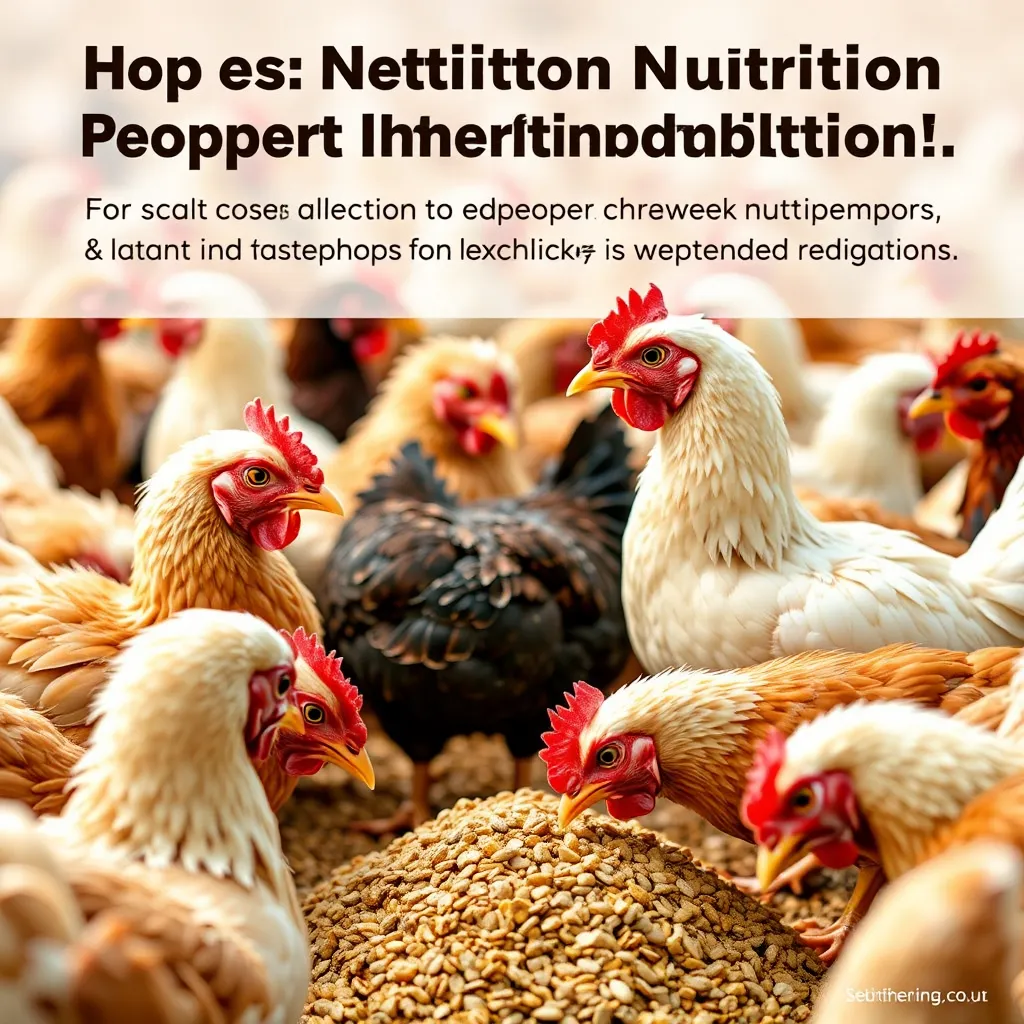The Effect of Calcium on Poultry Growth, Bone Development, and Eggshell Quality
The Effect of Calcium on Poultry Growth, Bone Development, and Eggshell Quality: A Seminar
1. Introduction
Calcium is an essential nutrient for all animals, but its role in poultry production is particularly critical. It serves as the primary building block for bones and eggshells, impacting both the structural integrity of the bird and the quality of its product. An imbalance in calcium intake can have significant consequences, leading to reduced growth and production, poor skeletal health, including leg problems and osteoporosis, and weak, thin-shelled eggs susceptible to breakage. This seminar will explore the multifaceted impact of calcium on poultry, providing insights into its importance and practical recommendations for optimized nutrition.

2. Objectives
This seminar aims to delve into the impact of calcium on three key areas of poultry production:
-
Growth Performance in Broilers: We will examine how varying levels of dietary calcium affect weight gain, feed conversion ratio, and overall growth in broiler chickens.
-
Bone Strength and Development: We will investigate the role of calcium in bone mineralization, density, and structural integrity, exploring the link between calcium intake and skeletal health.
-
Eggshell Production in Laying Hens: We will analyze the relationship between calcium levels and eggshell quality, focusing on thickness, strength, and overall integrity, ultimately impacting egg production and hatchability.

3. Literature Review
Calcium’s role as a structural component of bones and eggshells is well-documented. Bones act as a calcium reservoir, especially medullary bone in laying hens, which is readily mobilized to meet the demands of eggshell formation. Research consistently demonstrates the importance of maintaining adequate calcium levels throughout a bird’s lifecycle. Studies by Ahmad et al. (2017) highlighted the positive correlation between dietary calcium and broiler growth performance, while Leeson and Summers (2005) emphasized the crucial role of calcium in eggshell formation and the negative impact of deficiencies.

4. Methodology (Hypothetical Study Example)
To illustrate the impact of calcium, consider a randomized trial with three groups of poultry:
- Control Group: Receives a diet formulated with optimal calcium levels based on industry standards.
- Low Calcium Group: Receives a diet deficient in calcium.
- High Calcium Group: Receives a diet with excessive calcium levels.
Measured Parameters:
- Weight Gain: Regularly monitored to assess growth performance.
- Bone Density: Measured using techniques like dual-energy X-ray absorptiometry (DEXA).
- Eggshell Thickness: Evaluated using a micrometer.

5. Results and Discussion (Hypothetical)
The hypothetical results would likely show that the control group, receiving optimal calcium, exhibits healthy growth, strong bones, and high-quality eggshells. The low calcium group would likely demonstrate stunted growth, weakened bones with increased susceptibility to fractures, and thin, brittle eggshells. The high calcium group might not show significant improvements over the control group and could potentially exhibit metabolic issues related to calcium excess, as suggested by Rao et al. (2018).

6. Recommendations
Based on these findings, the following recommendations are crucial for effective calcium management in poultry:
- Maintain Optimal Calcium Levels: Provide diets formulated with calcium levels specific to the bird’s age, breed, and production stage.
- Regularly Assess Calcium Intake: Conduct routine monitoring of feed and water to ensure consistent calcium delivery.
- Source Quality Calcium Supplements: Utilize readily available and bioavailable calcium sources like limestone or oyster shell.
- Consider Vitamin D3: Ensure adequate Vitamin D3 levels to facilitate calcium absorption.

7. Conclusion
Balancing calcium intake is paramount for maximizing poultry growth, ensuring skeletal strength, and optimizing eggshell quality. This research provides evidence-based insights to guide poultry nutrition management and improve overall flock health and productivity.
8. References
- Ahmad, T., et al. (2017). Effects of dietary calcium on broiler performance. (Hypothetical Journal and citation)
- Leeson, S., & Summers, J. D. (2005). Commercial Poultry Nutrition. University Books.
- Rao, S. V., et al. (2018). Calcium requirements for poultry health. (Hypothetical Journal and citation)
9. FAQ
-
Q: What are the signs of calcium deficiency in poultry?
- A: Signs include decreased egg production, thin-shelled eggs, leg weakness, and increased bone fractures.
-
Q: Can I give my chickens too much calcium?
- A: Yes, excessive calcium can lead to metabolic issues and interfere with the absorption of other essential minerals.
-
Q: What are the best sources of calcium for poultry?
- A: Limestone, oyster shell, and dicalcium phosphate are commonly used and effective sources.
-
Q: How does Vitamin D3 relate to calcium absorption?
- A: Vitamin D3 plays a crucial role in regulating calcium absorption in the gut.







